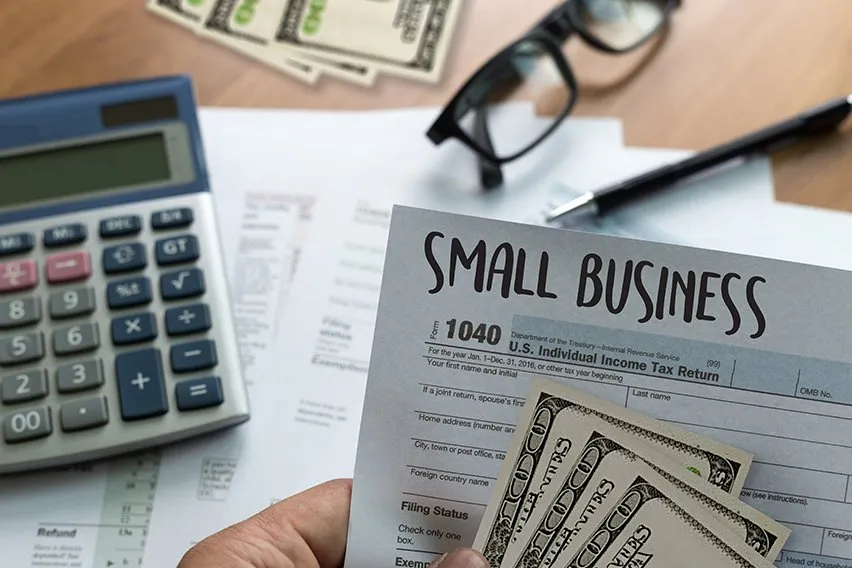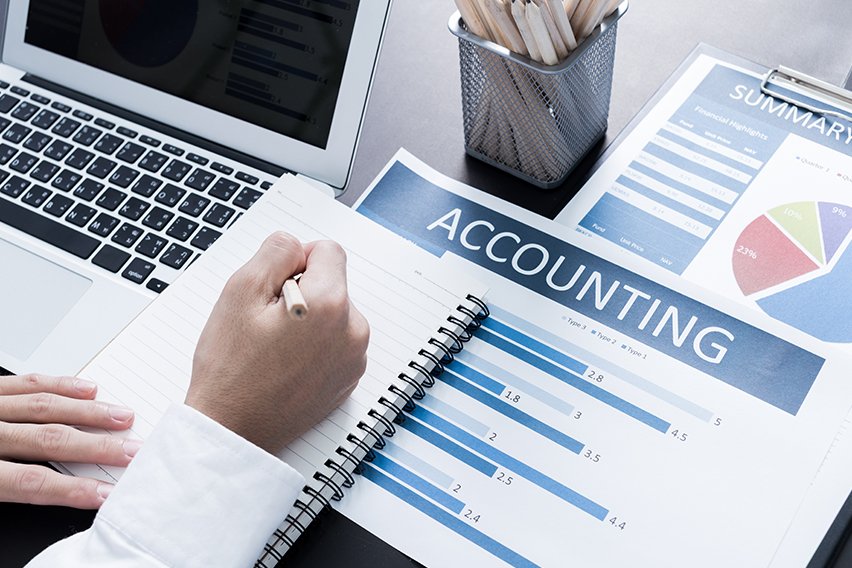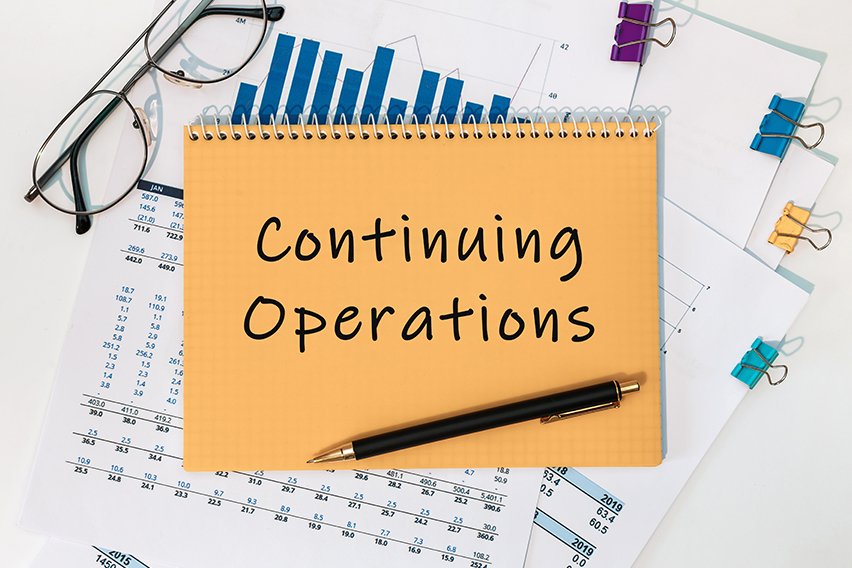How to Do Accounting for Small Business: Basics of Accounting

Accounting for small businesses is done by keeping a complete record of all the income and expenses and accurately extracting financial information from business transactions.
This is a necessary chore that helps small business owners track and manage their money effectively – especially during the early stages. Besides keeping you cognizant about your business’ past and present performance, small business accounting also helps in generating invoices and completing payroll.
What this article covers:
- How Do You Do Bookkeeping for a Small Business?
- How Do I Set up a Small Business Accounting System?
- Do You Need an Accountant for a Small Business?

How Do You Do Bookkeeping for a Small Business?
Analyzing Financial Transactions
The process of accounting starts with analyzing financial transactions and entering the ones pertaining to the business entity into the accounting system. For example, loans taken for personal reasons are not included in the business documents
The first step of the accounting process involves the preparation of source documents. A source document or business document serves as the foundation for recording a transaction.
Journal Entries
Business transactions are recorded in a journal (also known as Books of Original Entry) in a chronological order using the double-entry bookkeeping system. The journal entries include two accounts – debit and credit.
To make this process easier, accountants use a special journal to record recurring transactions such as purchases, sales, cash receipts etc. the transactions that cannot be included in the special journals are recorded in the general journal.
Ledger
The general ledger is a collection of accounts that display the changes made to each account based on past transactions, along with the current balances in each account. It is also known as the Books of Final Entry.
Unadjusted Trial Balance
A trial balance is prepared to test if the total debits equal total credits. The accounts are extracted from the ledger and arranged in a report. The balances of the debit and credit columns should be equal.
If not, the trial balance contains errors which need to be located and rectified with correcting entries. It’s important to note that some errors may exist despite the debits equaling credits, such as errors caused by double posting or due to the omission of entries.
Adjusting Entries
At the end of the accounting period, the accountant must prepare the adjusting entries to update the accounts that are summarized in the financial statements. For example, income earned but not recorded in the books.
Adjusting entries are made for accrual of income and expenses, depreciation, allowances, deferrals and prepayments.
Adjusted Trial Balance
Once the adjusting entries are made, an adjusted trial balance must be prepared. This is done to test if the debits match the credits after the adjusting entries are made. This is the final step before the preparation of the business’ financial statements.
Financial Statements
The financial statements which include the income statement, statement of changes in equity, balance sheet, statement of cash flow and notes are the end products of the accounting system.
Also Read: How to Make Financial Statement for Small Business
Closing Entries
To prepare the system for the next accounting, temporary accounts that are measure periodically, including the income, expense and withdrawal accounts, are closed. The balance sheet accounts also called the permanent accounts, remain open for the next accounting cycle.
The last step of the accounting cycle is to prepare a post-closing trial balance to test the equality of the debits and credit amounts after the closing entries are made. This trial balance contains real accounts only as the temporary accounts are closed this accounting cycle.
If you want to learn more about bookkeeping and the correct methods, follow our guide titled How to Become a Bookkeeper.

How Do I Set up a Small Business Accounting System?
Open a Business Bank Account
When you start a business, open a separate business bank account that will keep your business finances separate from your personal ones.
Choosing an Accounting Method
When setting up accounting for startups, you need to choose a method of recording financial transactions. There are basically two methods of recording income and expenses – the cash basis and the accrual basis of accounting.
Cash-basis
Under the cash-basis method of accounting, you record income and expenses when cash transactions are done. For example, you record revenue for a product only when the customer pays you for the product.
Accrual basis
While cash basis may be easier to use, most businesses choose the accrual basis accounting for recording transactions. Under this method, you record income when you make a sale and expenses when you incur them. This is irrespective of whether you received or paid cash for the product or service. You must use a double-entry accounting system and record two entries for every transaction.
Recording Transactions
As a small business owner, you have the option of hiring an accountant, recording transactions by hand or using an accounting software to record your business transactions.
Compile a Chart of Accounts
A chart of accounts lists all business transaction and is used to compile statements, review progress and locate transactions. These charts have to be updated often to include various business transactions.
Determine your Payment Terms
Based on the nature of your business, you might decide to offer credit to customers. Instead of collecting payments at the point of sale, you may choose to invoice them at a later date.
If you decide to extend credit to customers, you will need a consistent system of creating and sending invoices.
Do You Need an Accountant for a Small Business?
If you’re a small business owner, hiring an accountant for your small business can save you a lot of time and money. Accountants can help small business owners with the following tasks:
- During the formation of your business, an accountant can help you write a business plan
- Advise you on your business’s entity structure
- Help you obtain appropriate licenses such as business licenses, sales tax License and employment accounts
- Set up your accounting software and chart of accounts when you do not want to incur the bookkeeper’s services on a regular
- Deal with compliance and complex sales tax issues
- Handle complex labor costs including wage and labor compliance issues that can sink even the most profitable businesses.
- Help you meet the requirements for creditors or licensing agencies
- Maintain inventory records by dates purchased, stock numbers, purchase prices, dates sold and sale prices
Small business owners who cannot afford to hire a professional may in the meantime consider automating their small business accounting practices with one of the many cloud-based accounting software applications.
Most of these applications cover the basics of accounting from invoicing, payments and payroll. The software can assist you in keeping accurate records and create basic financial statements.
RELATED ARTICLES

 What Is a Good Liquidity Ratio?
What Is a Good Liquidity Ratio? Cash Basis Accounting: Definition, Example, Pros and Cons
Cash Basis Accounting: Definition, Example, Pros and Cons What Is the Matching Principle and Why Is It Important?
What Is the Matching Principle and Why Is It Important? What Is Fair Value Accounting?
What Is Fair Value Accounting? Continuing Operations: What Are Continuing Operations of a Business?
Continuing Operations: What Are Continuing Operations of a Business? How to Calculate Overhead Costs in 5 Steps
How to Calculate Overhead Costs in 5 Steps